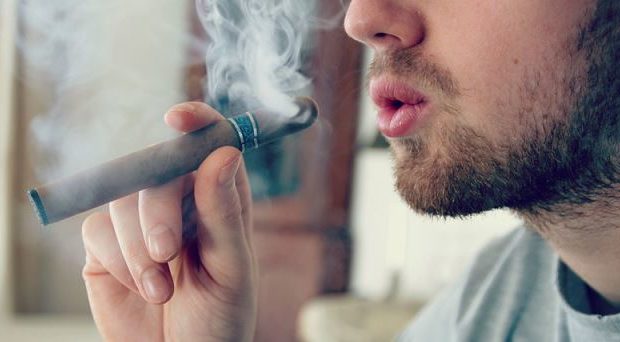
While the continued decline of adolescent cigarette use has been celebrated as a public health success, we should put away our party hats when we consider that overall tobacco use has remained relatively stable in recent years. In 2016, 20% of adolescents used tobacco products while 8% used cigarettes. Is that how we want to define success?
Increasing cigarette taxes has been a major policy driver to decrease smoking, including adolescent smoking, while taxes on other tobacco products have received less attention. Taxes on cigarettes, smokeless tobacco, and cigars are all fiscal policies, but they are not all equal. While state taxes on cigarettes have increased substantially over the past decade, there has been little change in policies governing alternative tobacco products.
Examining the impacts of tobacco taxes
The aim of our study published in BMC Public Health was to evaluate the impact of chewing tobacco and cigar taxes, cigarette taxes, and smoke-free legislation on adolescent use of smokeless tobacco and cigars.
Changes in tobacco control policies across and within US states created a natural experiment, which we were able to examine using data on 499,381 adolescents from 36 US states. In the Youth Risk Behavior Survey, adolescents’ self-report on how many days they used smokeless tobacco, cigars, and cigarettes over the past month. We linked information on state chewing tobacco taxes, cigar taxes, cigarette taxes and smoke-free restaurant legislation to each adolescent based on the year the survey was completed.
We found that chewing tobacco taxes had no effect on smokeless tobacco use and cigar taxes had no effect on cigar use. In contrast, a 10% increase in cigarette taxes was associated with a 1.0 percentage point increase in smokeless tobacco use among adolescent males. A 10% increase in cigarette taxes was also associated with a 1.5 percentage point increase in cigar use among adolescent males and a 0.7 percentage point increase in cigar use among adolescent females.
We also found some evidence that smoke-free legislation, such as a restaurant smoking ban, was associated with a 1.1 percentage point increase in smokeless tobacco use among adolescents, but only in males. There was no effect of smoke-free legislation on cigar use for males or females.
Taxes may be driving adolescents to cheaper alternatives
When developing tobacco control policies, we need to think beyond the conventional cigarette.
Our results suggest that higher state cigarette taxes are associated with adolescents’ use of cheaper, alternative tobacco products such as smokeless tobacco and cigars. In our data, from 1999 through 2013, 30/33 states increased their cigarette taxes while 16/33 states increased their taxes on chewing tobacco or cigars. As a percent of the retail price, this translates to a 73% and 58% average increase in chewing tobacco and cigar taxes, respectively. In contrast, combined with the federal cigarette tax increase of $1.01 in 2009, cigarette taxes ($/pack) increased by 141% in real terms over the study period.
Unless taxes on tobacco products are inflation-adjusted, their impact diminishes over time. If taxes on alternative tobacco products are not increased in line with cigarette taxes, some of the decrease in cigarette use reflects adolescents switching to other products. This would not be considered a public health success as health risks from alternative products are the same or greater than cigarettes.
When developing tobacco control policies, we need to think beyond the conventional cigarette. Adolescents are price sensitive and look to experiment with tobacco. Unfortunately the Youth Risk Behavior Survey did not ask about e-cigarettes or hookahs—two products that continue to gain in popularity.
Reducing adolescent tobacco use will require comprehensive tobacco control policies that are applied equally to and inclusive of all tobacco products, including chewing tobacco and cigars. If we can align our policies so populations that are more price-sensitive cannot easily substitute products, we may begin to see overall reductions in tobacco use. If that’s the case, then we’re ready for a celebration.
Comments